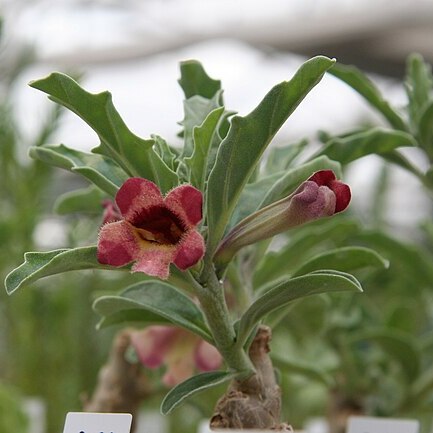The original description of the flower is wrong since it was obviously taken from a specimen that belongs to Harpagophytum. This widespread species has been misinterpreted (since Stapf F.C. 4, 2: 456 (1904) as Pterodiscus luridus Hook, f.; the true P. luridus has a very restricted distribution area near the southern coast of S. Africa. Unfortunately the type specimen of P. ngamicus possesses fruits that are not typical of this species, but are in shape and structure very close to those of P. aurantiacus; this is obviously due to the fact that the type locality is near the borderline between the distribution areas of P. ngamicus and P. aurantiacus.
Perennial herb, up to 300 mm tall. Basal organ a swollen stem arising from a subterranean tuber of the same diameter. Fruit usually rotund to circular in lateral view, beak distinct, 2-3 mm broad, wings of 2 sides not continuous at base, therefore base distinctly cordate. Flowers with yellow tube, sometimes suffused with purple, lobes yellow, red or purplish, throat yellow.
Fruit usually rotund to circular in lateral view, 2.5–3.0 cm. long, 2.5–2.8 cm. broad; beak distinct, 2–3 mm. broad; the wings of the two sides of the fruit not contiguous at the base of the fruit, base of the fruit therefore distinctly cordate.
Corolla tube yellow, sometimes suffused with purple; tube cylindrical, 2.5–3.5 cm. long, limb c. 2.0 cm. in diam., not exceeding twice the diam. of the throat; lobes yellow, red or purplish, subequal, oblate; throat yellow.
Perennial herb, up to 30 cm. high; the basal organ a swollen stem, 2–3 cm. in diam., sometimes divided at the top, arising from a subterranean tuber of approximately the same diam.
Leaves very variable, up to 10 cm. long and 1.2–4.0 cm. broad, subentire, dentate or pinnatilobed, usually with 3 pairs of lateral veins.
Seeds usually one in each loculus.

